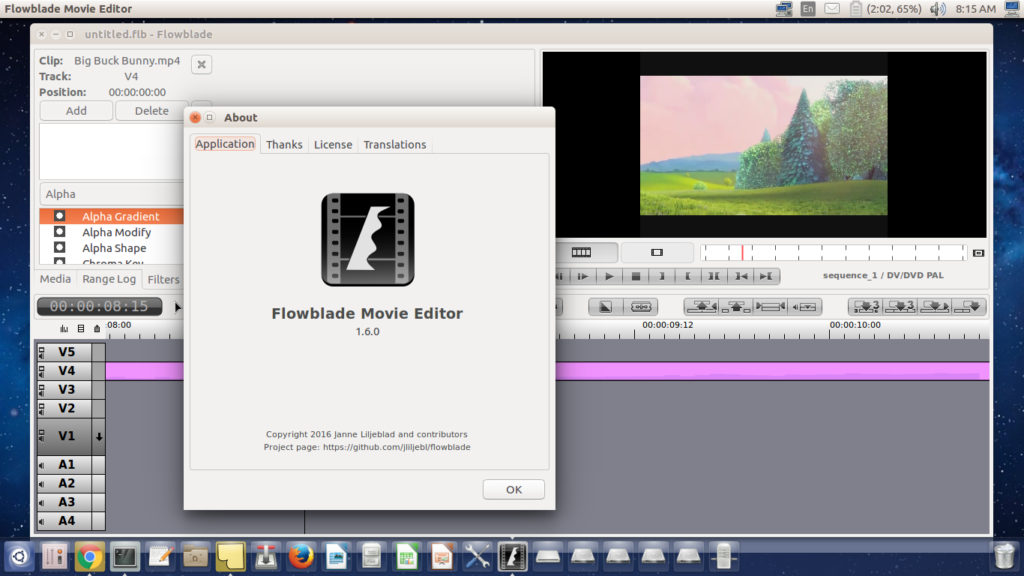Flowblade is a multi-track non-linear video editor for Linux.
“Flowblade is designed to provide a fast, precise and robust editing experience. Flowblade employs a film-style insert editing model as workflow. In insert editing clips are generally placed tightly after other clips when they are inserted on the timeline. Edits are fine tuned by trimming in and out points of clips or by cutting and deleting parts of clips. Flowblade provides powerful tools to mix and filter video and audio.”
Flowblade has lots of features catering to editing, image compositing, image and audio filtering and output encoding. Flowblade is dependent on FF-MPEG codec and t supports JPEG, PNG, TGA, TIFF graphics file types including SVG vector graphics.
Flowblade recently released version 1.6 which is the 11th release of the flowblade. This release includes plenty of enhancements and bug fixes from earlier release. The main features of this release are o enable support for G’MIC plugin. G’MIC is a full-featured open-source framework for image processing and it enables creating complex new image filters without writing any compiled code. You can have a look at the Vimeo video.
How to Install
To install Flowblade Movie Editor 1.6 in Ubuntu (including Xenial Xerus 16.04 LTS), Linux Mint and other derivatives, grab the deb file from below link.
Download Flowblade 1.6
Once downloaded, install it by running below command from terminal (CTRL+ALT+T).
sudo dpkg -i flowblade-1.6.0-1_all.deb
For missing dependencies error, run below command:
sudo apt-get install -f
After installation, you can find the Flowblade by searching in Dash for Ubuntu Or find under applications for other derivatives.
Screenshots
Flowblade Running in Ubuntu
Find out more video editors in Ubuntu/Linux:
